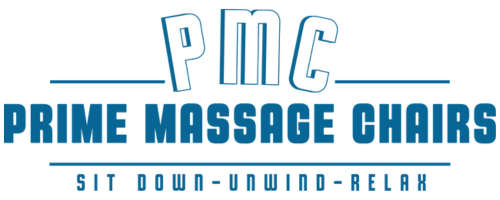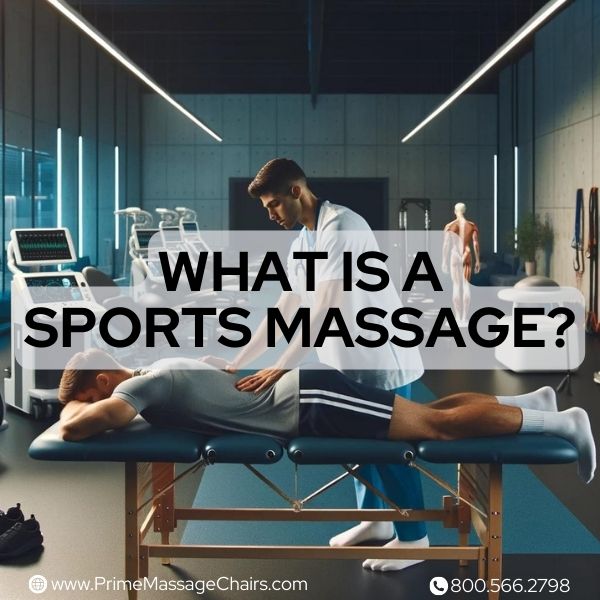
What is a Sports Massage?
What is a sports massage and what are the potential benefits? Are your muscles aching from intense workouts or sports activities?
Sports massage is designed to alleviate that pain and help your body recover faster.
In this article, we'll explore how this special form of massage can boost your performance and keep you on top of your game.
Keep reading for potential relief and revitalization!
Definition of Sports Massage
After learning about the focus of sports massage, let's explore its meaning.
Sports massage is a type of therapy geared towards athletes and those who exercise regularly.
It combines multiple techniques tailored to affected muscles and tissues to optimize physical conditioning and restore mobility.
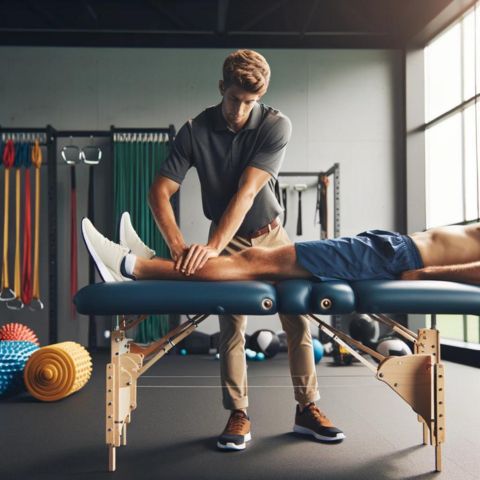
A sports massage helps with training as well as recovery from injury. The goal is to reach peak athletic performance or bounce back faster after exertion.
This kind of massage can involve different methods including stroking, kneading, warming up tight areas, and applying pressure to specific points.
Massage therapists use these techniques to work on soft tissues in the body such as muscles, tendons, and connective tissue.
During a session, they may also help stretch out stiff muscles and increase blood flow which helps heal scar tissue from injuries.
Overall, a sports massage focuses on reducing pain from muscle soreness or overuse while enhancing flexibility and range of motion.
Potential Benefits of Sports Massage
Sports massage goes beyond the relief found in typical massages by specifically targeting areas of the body that are overused and stressed from repetitive and often aggressive movements.
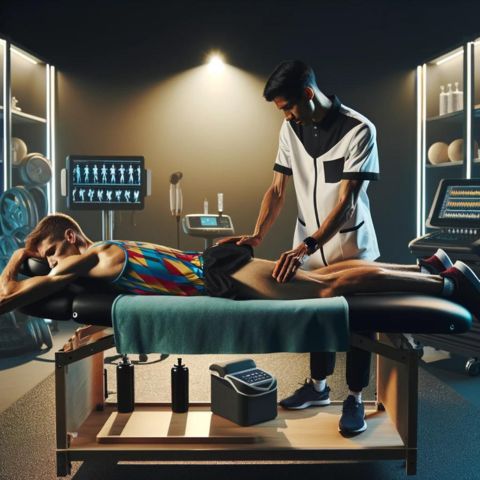
It aims to improve athletes' care through techniques that can lead to faster recovery times, reduce the risk of injury, and potentially boost overall athletic performance.
Improved Muscle Recovery
Sports massages are known to aid the recovery process after intense workouts by enhancing blood circulation, which facilitates the delivery of nutrients and oxygen to stressed muscles.
This focused approach may contribute to a feeling of reduced muscle pain and fatigue, as reported by many individuals, although individual experiences can vary.
Recent insights clarify that muscle soreness primarily results from microtrauma to muscle fibers, debunking the common misconception that lactic acid buildup is the main cause of post-exercise soreness.
Lactic acid primarily contributes to temporary discomfort and fatigue, not the muscle soreness felt days after exercise.
Sports massage promotes circulation and muscle relaxation, supporting the body's natural recovery processes.
Prevention of Injury
In addition to its preventive and recovery benefits, sports massage can also play a crucial role in the treatment of certain injuries, when incorporated into a broader healthcare plan by a professional.
Techniques such as deep tissue work and Trigger Point Therapy can help manage areas of muscle tension and discomfort, potentially reducing the risk of further strain.
Regular sports massages can help stretch tight muscles and enhance flexibility, potentially lowering the risk of injuries during physical activities by maintaining optimal muscle condition and mobility.
Stronger, healthier muscles mean better protection against the strain of sports and exercise.
Enhanced Performance
Sports massage helps athletes perform better. It increases joint range of motion and flexibility.
This makes movements smoother and more efficient. Less muscle tension and fewer spasms also mean better performance.
By helping to relax muscles and improve range of motion, sports massage may contribute to more efficient movement, which can be beneficial in athletic performance.
Muscle energy techniques used in sports massages may help enhance muscular power and efficiency, contributing to improved athletic performance on the field or court.
Now let's learn about what happens during a session.
The Process of Getting a Sports Massage
Getting a sports massage involves a few steps to ensure you get the most benefit.
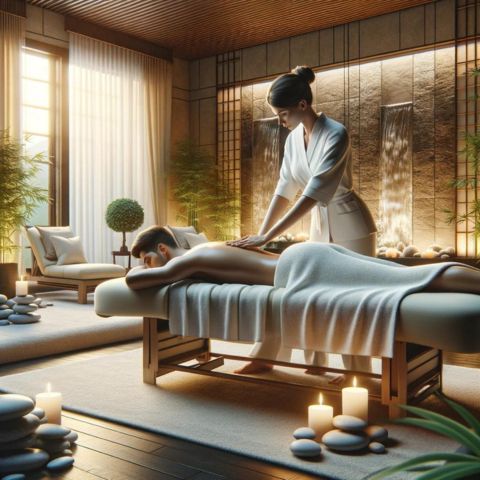
Here's what you can expect during the process:
- Book an appointment with a qualified therapist. Verify their credentials with organizations like the NCBTMB or AMTA.
- Discuss your specific needs, including any sports injuries or areas of tension, as well as your fitness goals.
- Arrive early to fill out health forms and give details about your physical activities and areas that need focus.
- Get comfortable on the massage table, usually by lying face down to start, with only the area being worked on exposed.
- Prepare for different massage techniques such as gliding, kneading, and stretching that target muscle groups relevant to your sport.
- Communicate with your therapist throughout the session about any discomfort or preferences in pressure and technique.
- Expect the therapist may use their palms, knuckles, or elbows to work deeper into muscles where needed.
- Know that a typical sports massage lasts between 30 minutes to an hour depending on whether it is pre-event, post-event or maintenance therapy.
- After the massage ends, it's recommended to hydrate well to aid in the recovery process and help the body remove by-products of muscle metabolism.
- Follow any aftercare instructions given by the therapist which might include stretches or exercises to maintain flexibility and strength.
Comparing Deep Tissue Massage and Sports Massage
When deciding between a deep tissue massage and a sports massage, it's important to understand their unique benefits and applications.
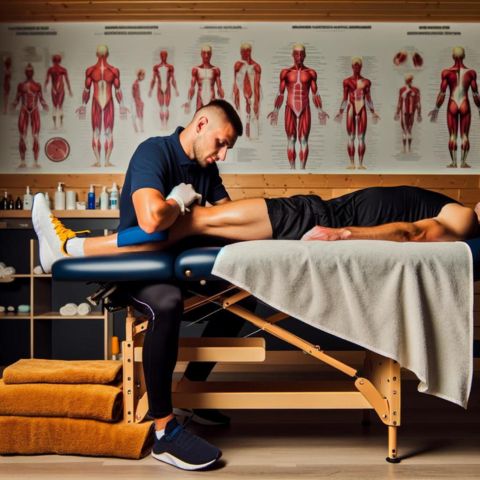
Here's a comparison between deep tissue and sports massage:
Deep Tissue Massage
- Primary Focus: Relieves chronic muscle tension through firm pressure
- Technique: Slow strokes and deep finger pressure
- Intended Use: Generalized tension, neck or back pain, pain management
- Potential Benefits: Reduces pain, increases mobility, breaks up scar tissue
- Best For: Individuals with chronic pain or dense muscle knots
- Potential Side Effects: Tenderness, stiffness, skin reaction to oils
Sports Massage
- Primary Focus: Targets specific muscles related to athletic activities
- Technique: Incorporates stretching, compression, and friction
- Intended Use: Enhancing performance, injury prevention, muscle recovery
- Potential Benefits: Improves range of motion, flexibility, and reduces spasms
- Best For: Athletes or individuals with sport-related muscle issues
- Potential Side Effects: Similar effects, with emphasis on muscle fatigue recovery
This comparison should help you determine which type of massage best suits your needs, whether you're managing chronic pain or aiming to boost your athletic performance.
Possible Side Effects of Sports Massage
Moving from the comparison of deep tissue and sports massage, it’s important to note that sports massages can have side effects.
Some people might feel sore after their session.
This is known as delayed onset muscle soreness (DOMS).
It's common and usually goes away in a day or two.
Other folks could get bruises if their masseuse presses too hard. Skin irritation might happen due to the oils used during the massage.
Always tell your therapist if you have sensitive skin or allergies.
Rarely, someone may experience swelling in soft tissues, which can be uncomfortable.
Remember to drink plenty of water after your massage to support your body's natural process of clearing metabolic by-products from the muscles, enhancing recovery.
This helps reduce some side effects like stiffness and tenderness.
If you ever feel sharp pain or major discomfort during your massage, speak up right away!
Your therapist will want to adjust their technique for your comfort and safety.
How to Find a Qualified Sports Massage Therapist
Finding the right sports massage therapist is key to getting the most out of your therapy. You want someone who can support your health and fitness goals.
Here's how you can find a qualified therapist:
- Use professional databases like NCBTMB and AMTA to search for certified therapists nearby.
- Check each therapist's certifications to ensure they're trained in various types of massages, including sports massage.
- Make sure the therapist has knowledge of different massage techniques like effleurage and petrissage that are important for athletes.
- Look into their experience with event - related massages, whether it's before, after, or for maintenance.
- Find out if they have a history of successfully treating common issues athletes face, such as muscle pain or strain.
- Choose someone who understands how to prevent athletic injuries and improve blood circulation through massage.
- Look for a therapist skilled in reducing swelling and tension to help speed up your recovery time after physical activities.
FAQs
What is a sports massage?
A sports massage is a type of therapy that focuses on treating soft tissue injuries and musculoskeletal pain that athletes often get from physical activity.
How does a sports massage help an athlete?
Sports massages can help athletes by easing tension headaches, reducing inflammation, improving blood flow to muscles, and speeding up recovery from injuries like tendinitis.
Are there different types of sports massages?
Yes. There are pre-event massages to prepare the body for sport, post-event massages to ease strain after activity, and rehabilitation techniques to help heal injuries.
What do therapists use during a sports massage session?
During a session, therapists might use their hands for manual therapy or manipulative therapy techniques such as joint mobilization; they may also apply massage oils while working on areas like the lower back.
When should you avoid getting a sports massage?
You should not get one if you have conditions like aneurysm risks in your veins or hernia issues – always talk with healthcare professionals before starting any new physical treatment.
Conclusion
Sports massage helps your muscles recover fast and can potentially keep injuries away.
If you play hard or work out a lot, this type of massage may be good for you.
Remember to choose someone who knows their stuff when looking for a therapist.
It's crucial to note that while sports massage offers numerous potential benefits, individual experiences will vary.
The effectiveness of sports massage can depend on several factors, including the athlete's condition, the technique used, and the frequency of the massages.
Always consult a healthcare provider or certified massage therapist before starting any new treatment to ensure it's suitable for your individual health needs and conditions.
With the right touch, you can stay at the top of your game!
Disclaimer:
We do not provide medical advice. The content of this article, including text, graphics, and other material, is for informational purposes only. It is not intended to be a substitute for professional medical advice, diagnosis, or treatment. Always seek the advice of your physician or other qualified health provider with any questions you may have regarding a health condition. Never disregard professional medical advice or delay in seeking it because of something you have read in this article or on our website.
